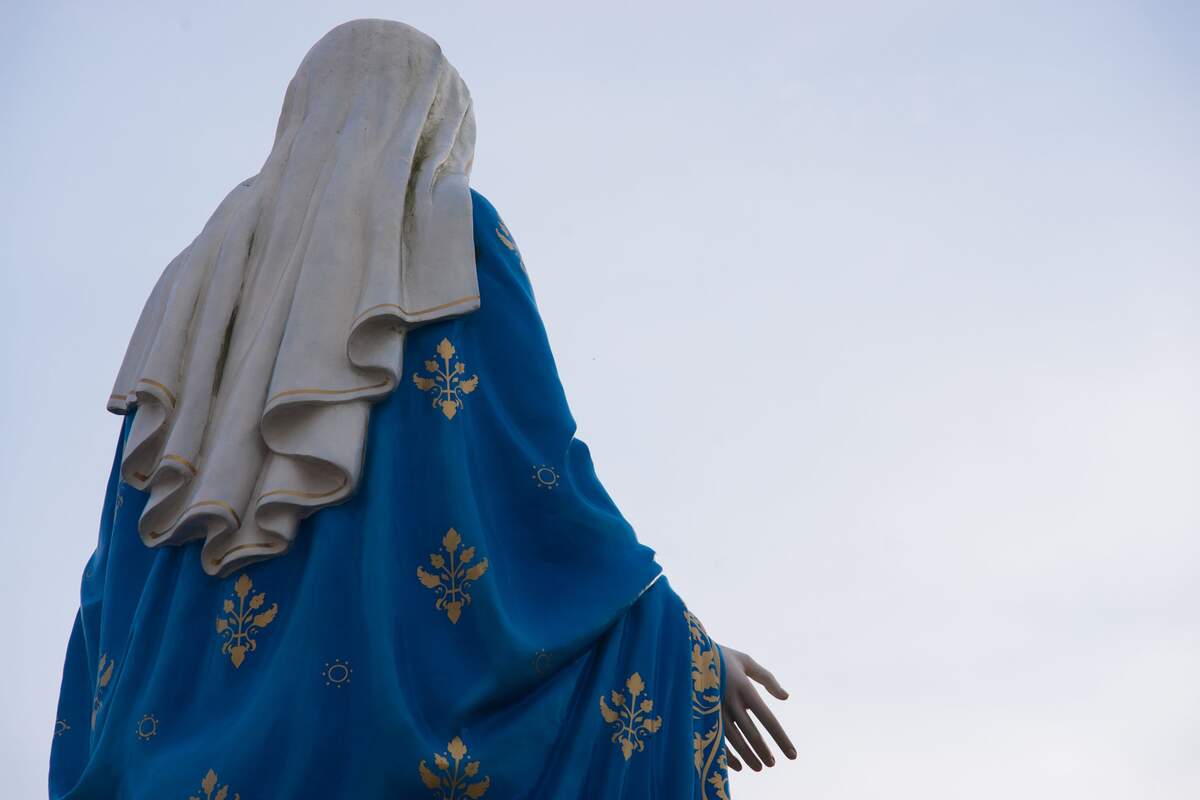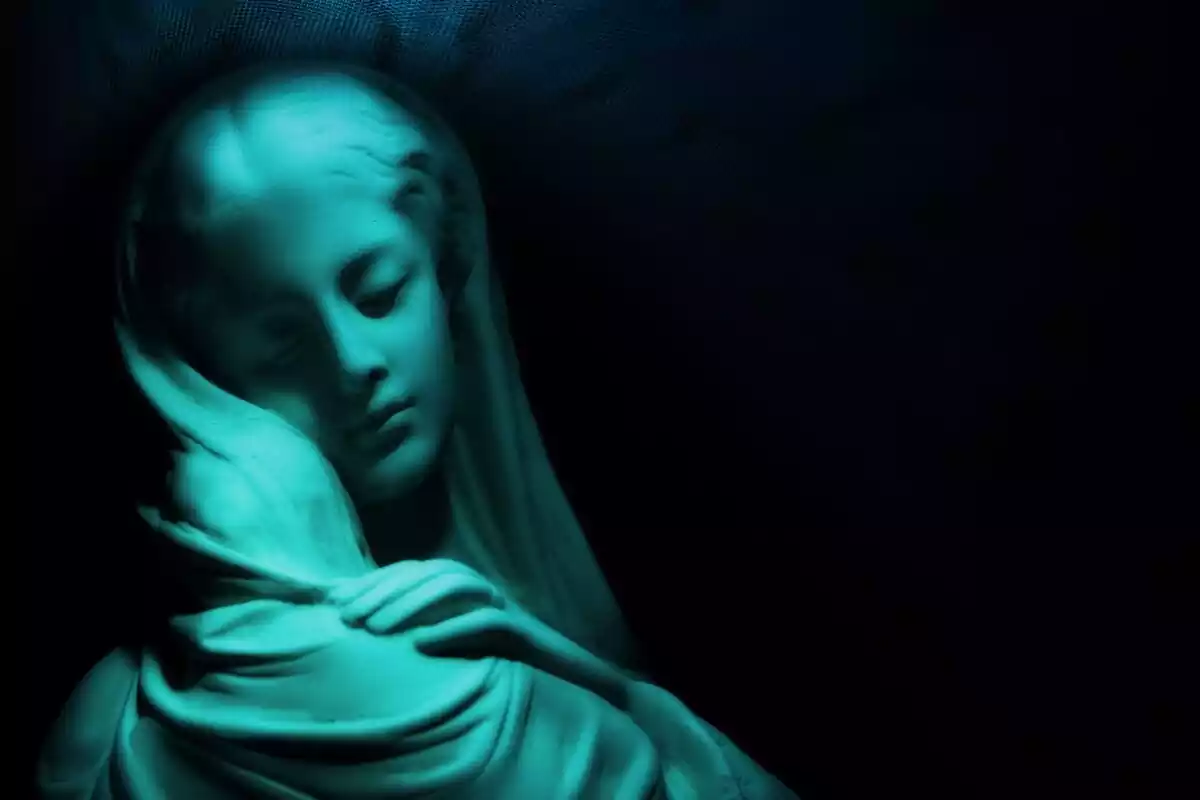Matthew (28:1-10) states that it was Mary Magdalene and the "other Mary" who went to the tomb and there encountered an angel. Mark (16:1-8) mentions Mary Magdalene and Mary, the mother of James and Salome. Luke (24:1-11) mentions two Marys, Joanna, and other (unnamed) women. John (20:11-18) specifically mentions only Mary Magdalene.
Thus, Mary, the mother of Jesus, is not identified in any of the gospel accounts as being present at the tomb. However, artists and the viewers of their works have employed considerable artistic license in imagining what may have been.
Some notable examples of "Three Marys" depictions include Giotto's Arena Chapel Frescoes, Nicolas Poussin's drawing of the Three Marys, Fra Angelico's Silver Armory Doors, Hubert Van Eyck's Lenten Cloth, and Caravaggio’s painting of the Entombment of Christ.
"The Three Marys" is a Christianized version of the Pagan Triple-Goddess. As Graves writes on pg. 191 of The White Goddess,"At Arles, in Provence, the cult of the Goddess as a Triad or Pentad of Mothers has survived under Christian disguise until today, when her festival is celebrated from May 24th to May 28th, the middle of the Hawthorn, or Chastity, month, but now her devotees are largely gypsies."
As a Triad she has become known as "The Three Marys of Provence" or "The Three Marys of the Sea"; as a Pentad she has had Martha added to her company, and a apocryphal serving-girl called Sara. It seems that these were Christianizations of pre-Christian reliefs on the tombstones of the cemetery of Alyscamps at Arles, in which the Triad, or Pentad, was shown on one panel; and below, on another, the soul in resurrection.

The ancient names of the triple-Goddess
The scene was explained by as the raising of Lazarus. As late as the time of Dante in the cemetery was used in the ancient style. The corpse was laid in a boat, with money in it, called "drue de mourtilage" and floated down the Rhone to the Alyscamps. The name Alyscamps has been explained as "Campi Elysiani", the Elysian Fields, but it is as likely that Alys was the ancient name of the Goddess; it may even be that the Homeric adjective Elysian (the "e" is a long one) is derived from her name.
Alys also appears as Alise or Alis in many French place-names. Dauzat's Dictionaire Etymologique, under "alis"and "alise", meaning a "sheltered creek", derives it from the Gaulish word "alisia", perhaps pre-Celtic, which is represented by numerous place-names, and which must also have provided the Spanish word for "alder" o "aliso". This makes good mythical sense, because Calypso's sepulchral island of Ogygia was screened by alder thickets.
Alys or Alis or Halys is the name of the biggest river of Asia Minor, and that is pre-Hellenic is shown by the town of Aliassus (-assus is a Cretan termination) built on its banks just before it turns north to empty into the Southern Black Sea. There are also two Hales rivers, one in Ionia, the other in Lucania, which may be named after the same goddess.
One name for the alder in German is "else", corresponding with the Scandinavian word "elle". The Danish Ellerkonge is the alder-king, Bran, who carries off children to the other world; but "elle" also means "elf" which should be regarded as a clethrad, or alder-fairy. This is Goethe's well-known ballad, based on his predecessor Herder's Stimmen der Volker, Ellerkonge is correctly translated "Erlkonig", the commoner German word for alder being erle."

This cult of the triple-Goddess, or the Three Marys, is further explained by Margaret Starbird in her book "The Woman with the Alabaster Jar." It is intimately connected with the tradition of Mary Magdalene, or the Bloodline/Holy Grail heresy, which was promulgated in medieval times by the Albigensians (and thus also known as the "Albigensian heresy"). Sir Laurence Gardner explains the etymological connection between "Albigensian" and "elf" in his book "Genesis of the Grail Kings".


